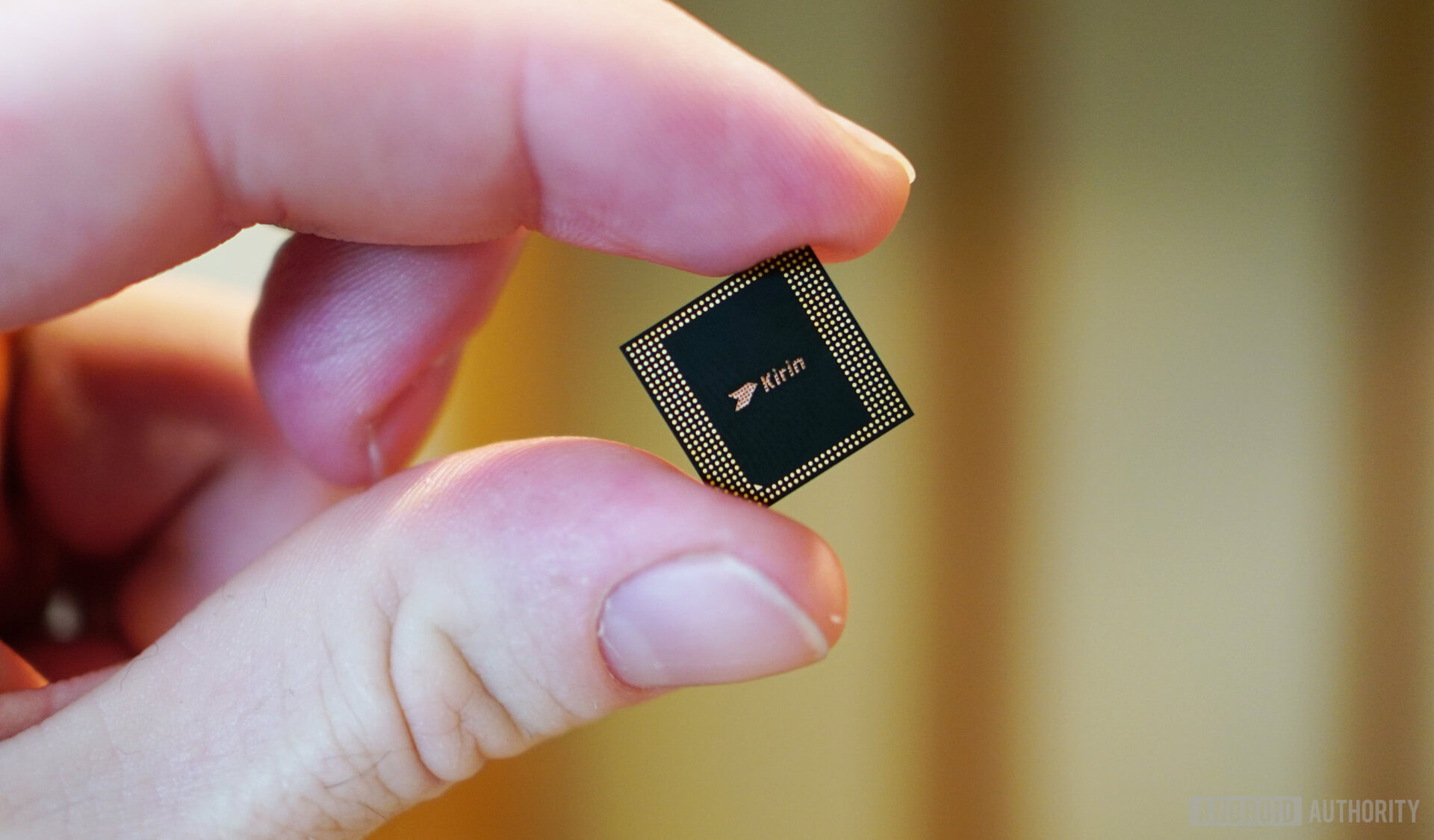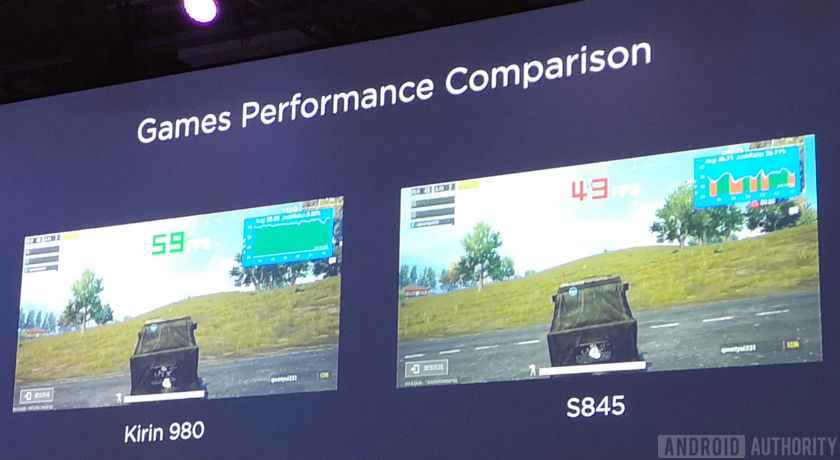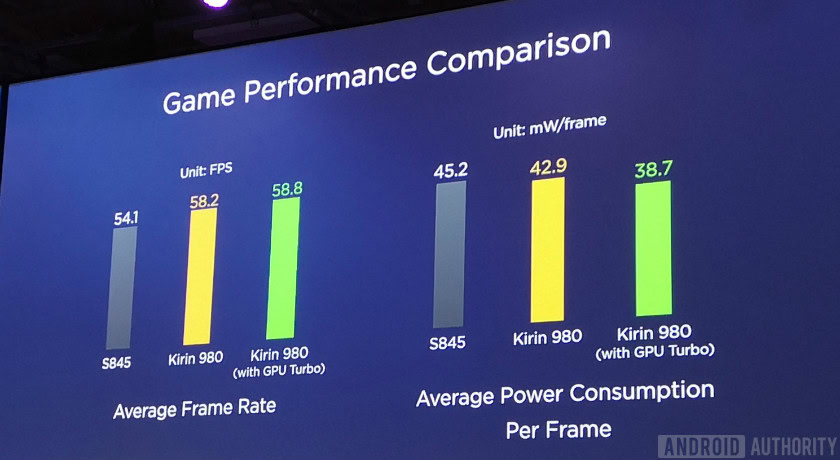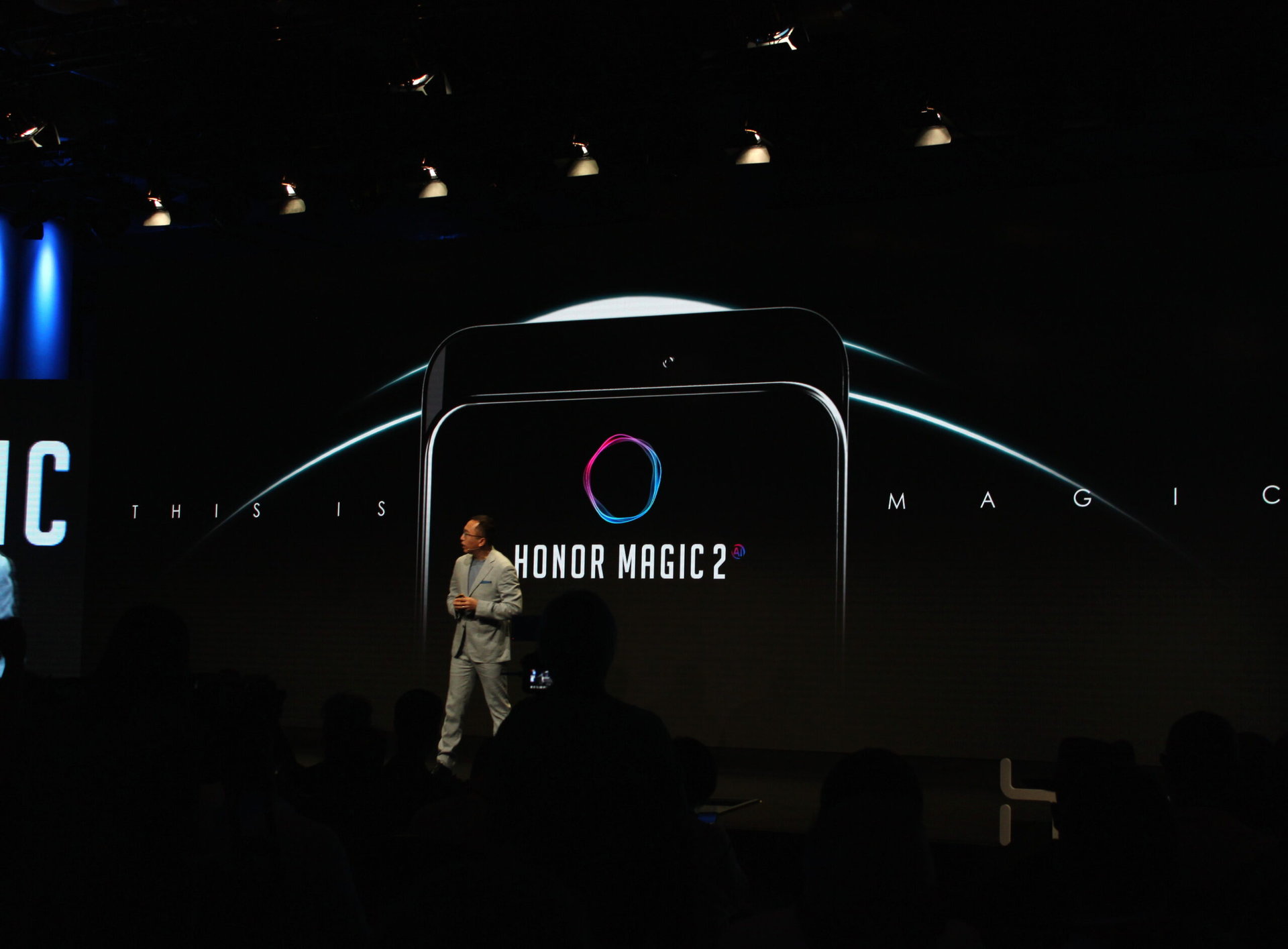Affiliate links on Android Authority may earn us a commission. Learn more.
Fact check: HUAWEI flaunts Kirin 980 gains over Snapdragon 845, but are they meaningful?
Published onSeptember 3, 2018

Richard Yu’s keynote announcement of HUAWEI’s new Kirin 980 smartphone SoC was an unusually aggressive affair. The company has Qualcomm’s Snapdragon 845 firmly in its sights, with comparisons and benchmarks abound that showcase the Kirin 980 coming out on top.
Related reading: HiSilicon: What you need to know about HUAWEI’s chip design unit
Of course, without a smartphone in our own hands, we shouldn’t be too trusting of HUAWEI’s own internal testing. However, we can definitely take a look at some of the company’s claims and see which make sense given the bountiful details that we already have on the latest Arm CPU and GPU parts that the 980 is using.
For a recap, let’s break down the specifications of the two chips.
| HiSilicon Kirin 980 | Qualcomm Snapdragon 845 | |
|---|---|---|
CPU | HiSilicon Kirin 980 2x Cortex-A76 @ 2.6GHz 2x Cortex-A76 @ 1.92GHz 4x Cortex-A55 @ 1.8GHz (4MB shared L3 cache) | Qualcomm Snapdragon 845 4x Kryo 835 (Cortex-A75) @ 2.8GHz 4x Kryo 835 (Cortex-A55) @ 1.7GHz (2MB shared L3 cache) |
GPU | HiSilicon Kirin 980 Mali-G76 MP10 | Qualcomm Snapdragon 845 Adreno 630 |
AI processing unit | HiSilicon Kirin 980 2x NPU | Qualcomm Snapdragon 845 Hexagon 685 DSP with HVX |
RAM | HiSilicon Kirin 980 LPDDR4X @ 2133MHz | Qualcomm Snapdragon 845 LPDDR4X @ 1866MHz |
LTE modem | HiSilicon Kirin 980 LTE Cat 21 1.4Gbps down / 200Mbps up | Qualcomm Snapdragon 845 LTE Cat 18 1.2Gbps down / 150Mbps up |
Process | HiSilicon Kirin 980 TSMC 7nm FinFET | Qualcomm Snapdragon 845 TSMC 10nm FinFET |
CPU gains and power efficiency
Much of the focus in HUAWEI’s presentation was on efficiency and gaming performance, with only a smidgen of CPU comparisons thrown in. According to HUAWEI’s internal testing, the Kirin 980 scores around 3360 in Geekbench single core. That’s considerably faster than the Snapdragon 845’s 2452 score and matches the gargantuan M3 cores inside Samsung’s Exynos 9810.
Drastically improved single core performance isn’t surprising. The Kirin 980 implements Arm’s high-performance Cortex-A76, while the Snapdragon 845 is based on the Cortex-A75. The 37 percent performance improvement metric matches with the roughly 35 percent figure that Arm itself gave for the new core, give or take a few percentage points for clock speed variations. The 32 percent better power efficiency figure also seems rather fair, given the smaller 7nm processing node and architecture improvements. The chip also boasts a large 4MB shared L3 cache, double that of the Snapdragon 845, to keep the cores well fed. So far, HUAWEI’s CPU claims stack up pretty well.
The efficiency angle of the Kirin 980 is a little more of an unknown. Three-tier performance points with independent power and clock domains will, in theory, escape performance and energy penalties that hit previous big.LITTLE architectures. This should allow the chip to better balance efficiency for the task at hand, even more so than Qualcomm’s DynamIQ implementation. HUAWEI’s scheduling slide certainly indicates that this is the goal.
However, this does make task scheduling much more complicated than traditional two-tier designs. HUAWEI claims to have solved the problems with work put into its predictive scheduler and touts improved “AI” load prediction to keep power consumption under wraps. But this is where we need to hands-on time with a physical product to see if responsiveness, load times, and battery life benefit as much as the theoretical potential suggests.
Finally, there’s also the higher frequency LPDDR4X RAM implementation to keep high-performance components well fed. Albeit perhaps at the expense of some extra energy consumption. This will certainly help with faster load times and graphics performance, which we’ll take a closer look at in a minute.
The CPU performance and efficiency gains are likely to be very impressive, and not just because of 7nm. Although task scheduling performance is an unknown.
The Kirin 980’s power efficiency gains, even without worry about the exact numbers, are a result of several factors. The move to 7nm from 10nm is undoubtedly a major contributor, as is the three-tier CPU cluster design with its dedicated power points, along with the improved predictive scheduler. On the CPU and memory side, this should be a good chip.

Gaming performance
While I’m reasonably convinced that the CPU and memory performance gains touted are likely to be reasonably representative, the GPU examples are less convincing. Yes, the Mali-G76 MP10 is certainly more powerful than the Kirin 970’s Mali-G72 MP12. There are 67 percent more execution engines, plus additional gains from other architecture improvements. But some quick math on existing benchmarks suggests this is really only going to push HUAWEI’s GPU performance up to Adreno 630 levels. HUAWEI is banking on its GPU Turbo technology to overtake Qualcomm, but the demos aren’t as convincing.
First up the NBA2k18 demo that showed a roughly 20fps advantage for the Kirin 980 was a CPU bound test. But it’s at least assuring to know that the single core performance gains transfer over to the real world. Other GPU figures showed more mixed results for HUAWEI’s new chipset, with the company even claiming that its performance is very close to the year-old Snapdragon. HUAWEI only claims to outpace the Snapdragon 845’s gaming performance when utilizing its GPU Turbo technology.

The PUBG demo provided a clearer win for HUAWEI’s Kirin 980, with a higher and much more consistent frame rate than its rival. However, the company has worked closely with PUBG and Mobile Legends developers to further optimize their games for GPU Turbo, so other titles may not benefit.
GPU performance may catch up with the 845, but there are only a handful of GPU Turbo titles that can press any sort of advantage.
GPU Turbo is coming to four more titles in a future update, and you probably only need GPU Turbo for less demanding games anyway. However, the vast majority of games will not experience this extra performance boost, leaving HUAWEI’s chip behind its biggest competitor. Although, the flaunted 187 percent energy efficiency boost, if true, will be a huge benefit to gamers on-the-go.
The bottom line is that graphics performance remains the weakest link on HUAWEI’s Kirin SoCs. The Kirin 980 has probably caught up to the Snapdragon 845 and may even beat it in some scenarios, but it’s not a revolutionary leap gaming performance. Real world results are going to be very content-dependent, but I wouldn’t bet on HUAWEI’s Kirin 980 phones being the very fastest gaming handsets around throughout 2019.
Wait for the Kirin 980 vs Snapdragon 855 …
Ultimately, comparisons to the Qualcomm Snapdragon 845 are a little unfair. The chip is nearing a year old and the Snapdragon 855 will arrive before the end of the year, also built on a 7nm process and with a host of other improvements. While the Kirin 980-equipped Mate 20 will launch before 2019’s Snapdragon 855 flagships, HUAWEI’s advantages specified here almost certainly won’t apply to the same extent, come the wave of flagship phone announcements in early 2019.

This isn’t to say the Kirin 980 won’t be a very competitive chip in 2019 though. The CPU, GPU, memory, AI, and other improvements set a high bar for Qualcomm’s Snapdragon and Samsung’s Exynos next-gen flagship parts. The Mate 20 and next entry in the HUAWEI P series will handle just about anything you can throw at them. Just as importantly, if HONOR continues to include high-end Kirin processors at lower price points, the Kirin 980 could really shake up the mid-tier market.